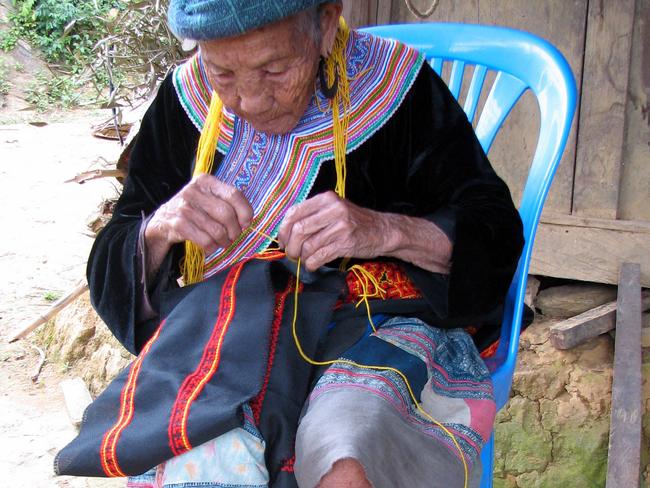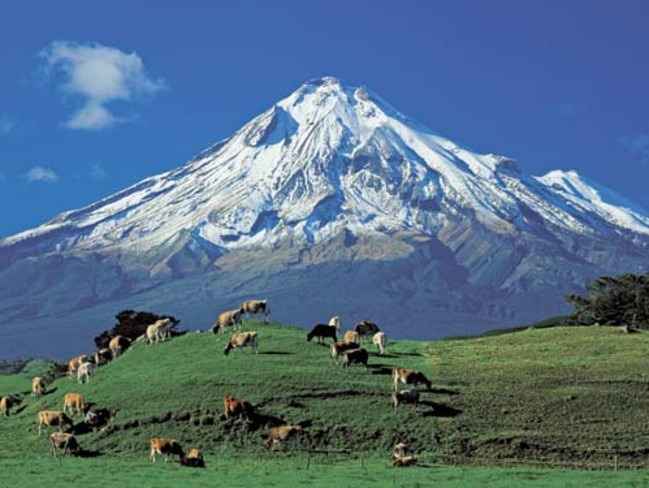The Trans-Pacific Partnership Agreement: What’s in it for Australia?
THE negotiations have been shrouded in secrecy. We have not been told the details. But there’s a push for Australia to sign up now.

AS NEGOTIATIONS on the world’s largest regional free trade agreement wrap up, there seem to be few sweeteners for Australians.
James Brown, director of the Alliance 21 program at the United States Studies Centre at the University of Sydney, said the biggest deals being done as part of the TPP were over access to Japan’s agricultural markets and Canada’s dairy industry.
Mr Brown told news.com.au that while the measures in the Trans-Pacific Partnership Agreement (TPP) had still not been made public, from what he understood their short term impacts would probably not be obvious to most Australians.
“Most of the changes that this deal would bring in won’t be obvious to the consumer,” he said.
In fact, many of the sweeteners that Australia would be hoping for, including access to America’s sugar consumers and to Canada’s dairy market, are probably unlikely to happen.
This has some National MPs starting a “no sugar, no deal” campaign, which demands Australia abandon negotiations if access to new sugar markets is not included.
Even in the US, critics argue that the TPP will hurt American workers, weaken food safety and financial regulations and undermine environmental and labour standards.
Others believe intellectual property provisions will see a transfer of wealth to US pharmaceutical companies and Hollywood.

Associate Professor Adrian Hearn of Melbourne University notes in his report China and the TPP, that there is speculation the US could be using the agreement as a way of limiting China’s expansion.
While Prof Hearn’s report did not find evidence that the TPP aimed to contain China, it seems to have prompted negotiation of a rival Chinese deal, the RCEP, which excludes the US and which Australia is also involved with.
Mr Brown agrees with Prof Hearn in that he does not think the TPP tries to contain China but notes that the US has had issues over its intellectual property rights in China.
“Part of this is about competing with China but I wouldn’t say it’s about containing China,” Mr Brown said.
So far there have been five years of negotiations over the TPP and there is a push to get the deal signed off this week to ensure it gets ratified in the US Congress ahead of the next US election.
Australian Trade and Investment Minister Andrew Robb is in Hawaii with the aim of concluding talks and said the TPP aimed to level the playing field between private business and state owned enterprises when it came to commercial activities.
“In traditional areas the government is working hard to deliver commercially meaningful outcomes for Australian agricultural exports such as beef, dairy, grains, sugar, horticulture, seafood and wine, as well as securing gains for our resources and energy exports, manufactured and other goods,” he said.
While the negotiations have been shrouded in secrecy and some are sceptical it can be concluded this week, Mr Brown was more optimistic.
“I think there is a good chance it can happen this week,” Mr Brown said.
But Shiro Armstrong of Australian National University warned in an article, that there were potential pitfalls of pushing the TPP through.
“The temptation”, writes Armstrong, “will be strong to rush across the finish line for what will be a major political trophy — but the risk is that the TPP will be an agreement that does more harm than good for economic and political relations in the Asia Pacific”.
WHAT’S IN IT FOR AUSTRALIA?
Over the long term, Mr Brown said Australia would probably benefit from increased productivity and access for Australian industry to parts of Asia that are currently closed to it.
The TPP may also make it easier for professional services firms to set up operations overseas.
Despite the lack of obvious immediate advantages for Aussie consumers, Mr Brown said there were a number of reasons why it was important for Australia to be one of the 12 countries to sign the deal.
The TPP is worth more than $200 billion and would be signed by 12 countries including Brunei, Canada, Chile, Japan, Malaysia, Mexico, New Zealand, Peru, Singapore, the United States and Vietnam.
Access to markets was the main reason, with Japan being the big one. The toughest negotiations have centred around the US wanting Japan to open up its agricultural industry, as well as its car market.
If Canada opened up its dairy market to foreign products this could also help Australian farmers. The TPP could also make countries like Vietnam more friendly to foreign companies, in return for increased access to the US garment industry.
Mr Brown said that one of the main motivations for countries to sign the deal was the “gorilla in the room” — the US.

“You have to get on board if you want access to US markets, if you don’t sign the deal it will be harder for countries other than Australia to do that,” Mr Brown said.
“In the case of Vietnam, it really doesn’t want to be dependent on China for trade, so it is keen to increase its closeness to America.”
SUGAR
One of the most lucrative markets that Australia wants access to is America’s sugar consumers but Mr Brown doesn’t know whether this will happen as the US sugar lobby is very powerful.
However, the lack of action would likely not go down well, with the Nationals threatening to cross the floor of federal parliament if sugar is not included in the TPP.
The Nationals even believe the deal is not worth doing without a sugar deal. Some MPs have taken to social media to post “no sugar, no deal”.
“A token deal for sugar in the TPP will not be sufficient,” George Christensen, Michelle Landry, Keith Pitt, Ken O’Dowd and Senator Matt Canavan said in a joint statement on Thursday.
Sugar producers missed out on being included in a free-trade agreement signed with the US in 2004, as well as recent agreements signed with China and Japan, so are looking for new measures in the TPP.
DAIRY
This is another arena that Australia is pushing hard to open up, but which could be derailed by an upcoming election in Canada.
Australia, the US and New Zealand all want more access to Canada’s milk market, which the government has traditionally restricted supply to thereby keeping prices high. Some analysts believe this is such an important component of the deal that if Canada doesn’t come to the table, then this would see New Zealand, which produces a third of total global exports of dairy products, drop out of the deal altogether.

MEDICINE
This is a potential pitfall for Aussie consumers as some believe the US wants to strengthen intellectual property rights of companies which create new medicines and delay access to cheaper generic versions of these.
Shiro Armstrong of Australian National University argued in an article that stronger intellectual property rights could simply see the transfer of wealth to US pharmaceutical companies.
Mr Brown agreed this was a sensitive spot for Australia as US companies want to be able to charge more for their products in Australia. Currently, the government sets the highest price that chemists can charge for certain medicines and also subsidises the cost of these medicines for people who need them the most. But the US wants the market to be less regulated.
“But the government has made it very clear that they won’t trade that away,” Mr Brown said.
LAW SUITS
There has been a lot of controversy around the possible inclusion of investor-state dispute settlement provisions that could give foreign companies the right to sue a government if they pass policies that hurt their business investments.
Philip Morris is already trying to sue Australia over its cigarette packaging rules but its action is complicated because currently the rules don’t allow US companies to directly sue the Australian government.
Mr Brown said there had been so much controversy around this measure that he thought it would be wise to drop it.

GOVERNMENT POWER
Some of the biggest impacts could come from the agreement’s focus on how government-owned enterprises run their companies, protection of intellectual property and government purchasing.
This is likely to hit countries like Malaysia the most, to the point that they may even have to withdraw from the agreement. This is because the government in Malaysia currently favours ethnic Malays when considering who to grant government contracts to. Under the TPP they will not be able to do this.
“These sorts of reforms are tough to sell, and makes it tricky for Malaysia to join, but are also an example of problems that the TPP will try to get rid of,” Mr Brown said.
Associate Professor Adrian Hearn said in his report that the TPP’s core goal was also its greatest liability: “it seeks to expand the role of markets in the delivery (of) healthcare, housing, foreign investment, and services in a region where government programs have long underpinned social welfare, national development and international cooperation.”
Vietnam stands out among TPP as a country with a high level of state intervention, but more significantly this also applies to China and this also stops it from joining the negotiations.
REGIONAL COOPERATION
Members of the TPP account for nearly 40 per cent of the global GDP and Australia would benefit from being part of the regional supply chain.
For example, Mr Brown said that components for the iPhone were manufactured and assembled in a number of different countries, and it was good to have low trade barriers to enable that.
Another benefit of the agreement is that it seeks to lock in rules that all the countries should follow around transparency, government and accountability.
INTERNET
Internet service providers may also be made responsible for enforcing intellectual property rights and this would likely lead to more internet censorship so that they do not breach copyright.



